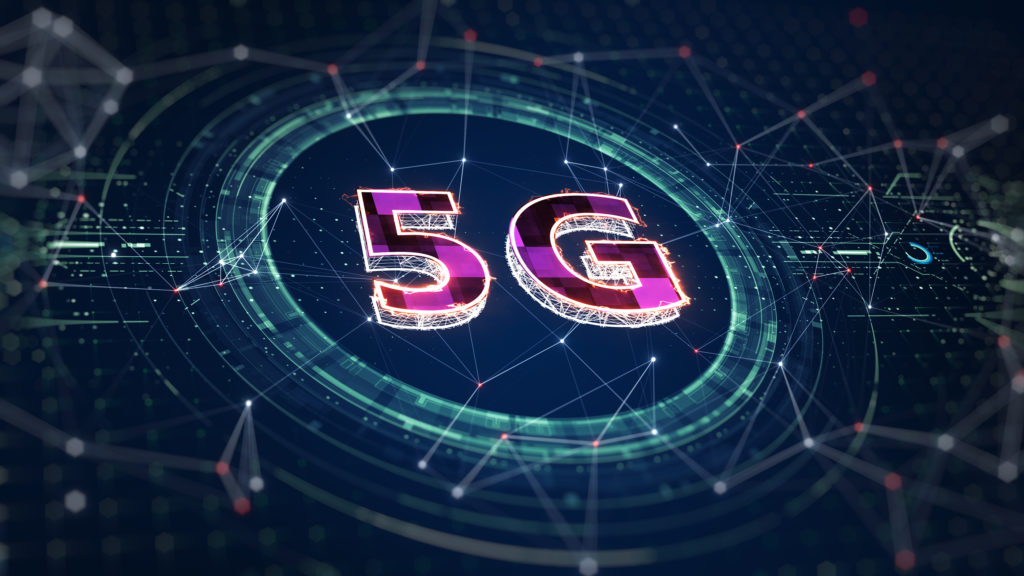
The COVID-19 pandemic has hindered 5G network rollouts in the U.S since it began almost two years ago. Now, due to pandemic-related hiccups in the global supply chain, rollouts are slowing even further. As the New York Times reports, chips and other electronics that are necessary for upgrading important network equipment, such as alarm systems that send emergency text alerts, are not reaching manufacturers in time. Without these upgrades, phasing out 2G and 3G is proving difficult for some telecommunications companies as they race to meet 5G deadlines.
Three Technologies That May Speed 5G Rollouts
5G has the potential to deliver lightning-fast internet speeds. However, because it has trouble penetrating obstacles like walls and trees, it is notoriously difficult to implement. As Cabe Atwell reports in Fierce Electronics, there are three technologies that can help solve this problem. One is microwave anyhaul, which can deliver data without relying on fiber. Using this technology, air interfaces are strapped to towers and can send radio signals up to 170 GHz over expansive regions.
A second potential solution is with new Integrated Access Backhaul (IAB) technology. Like microwave technology, IAB does not rely on fiber. However, it connects to the heart of the network through an available slice of mmWave bandwidth.
“IAB allows for multi-hop backhauling using the same frequencies employed for user equipment (UE) access or a distinct, dedicated frequency,” writes Atwell. “The technology uses a multi-hop approach to network deployment and allows deployment of mmWave base stations with or without fiber backhaul transport. It works using a fraction of the deployed base stations to act as donor nodes, which use a fiber/wired connection. The others without a wired connection are called IAB nodes. Both types of base stations generate an equivalent cellular coverage area and appear identical to user equipment in the field.”
A third way to deliver 5G, particularly to rural areas, he adds, is with an interleaved passive-active antenna (IPAA) radio platform. The technology includes two modules. One is a passive module that supports a number of bands in the 700 MHz and 2.7 GHz frequency range. The other is an active module that delivers TDD beamforming functionality for 5G n78 (3.4 to 3.8 GHz). The modules, Atwell writes, can be altered to “support different frequency combinations to suit any particular area.”
Solving 5G Security Flaws
Despite 5G’s many benefits, such as speed and reliability, it poses major challenges when it comes to security, reports National Defense. A terrorist attack, for example, could easily take down an unprotected cell tower and all military communications with it. To solve this, a company called Secure Electromagnetic Pulse Resistant Edge devised a special cell tower with a “virtualized” core, which will preserve communications in the event of an attack.
“Our tower can continue to function because we have a functional core— the brains of the system— on every tower that we have,” CEO Robert Spalding told the magazine.
He added that the tower is currently going through electromagnetic pulse (EMP) testing in order to receive military certification. An EMP is an intense burst of energy that can be caused by a nuclear weapon or geomagnetic disturbances such as solar flares.
While 5G comes with many obstacles, it is expected to be one of this century’s most transformative technologies. However, it will take time and innovation to make 5G a reality worldwide.
Learn More About 5G Networks
As technology continues to evolve toward 5G, it’s vital for technical professionals and industry leaders to understand how to deliver on the 5G vision while meeting consumer demand for higher communication speeds. Is your organization ready? Consider training your team with 5G Networks, a three-course program from IEEE and Nokia.
Connect with an IEEE Content Specialist today to learn more about the program.
Interested in learning more about 5G for yourself? Visit the IEEE Learning Network today!
Resources
Lohr, Steve. (24 September 2021). In Race for 5G, Alarm and Security Services Get Stuck in the Middle. New York Times.
Atwell, Cabe. (30 September 2021). What is 5G? Fierce Electronics.
Roaten, Meredith. (30 September 2021). 5G Tower Designed to Protect Battlefield Communications. National Defense.


No comments yet.